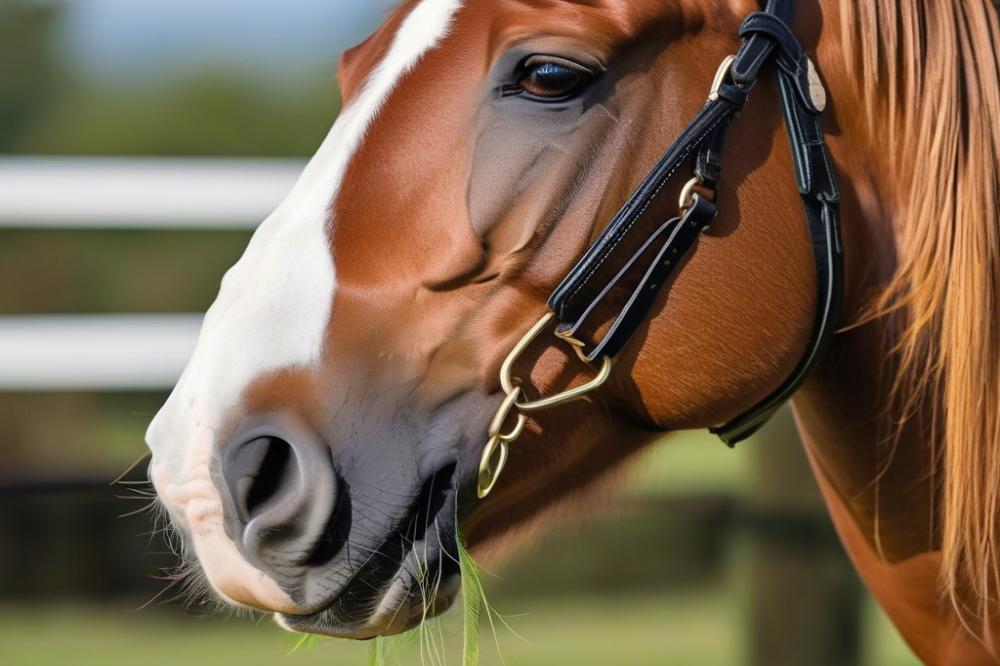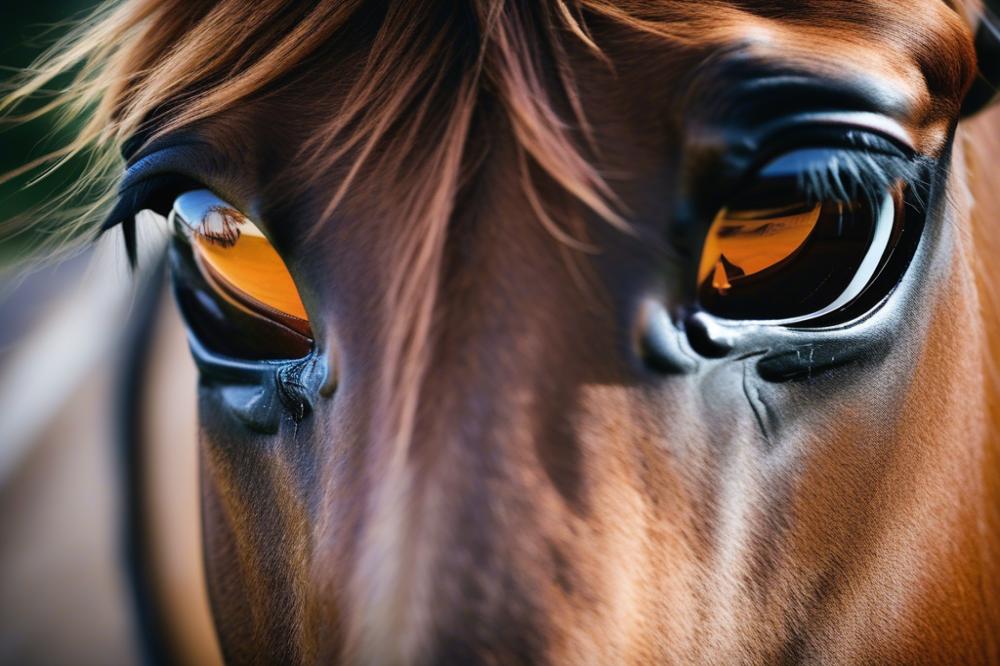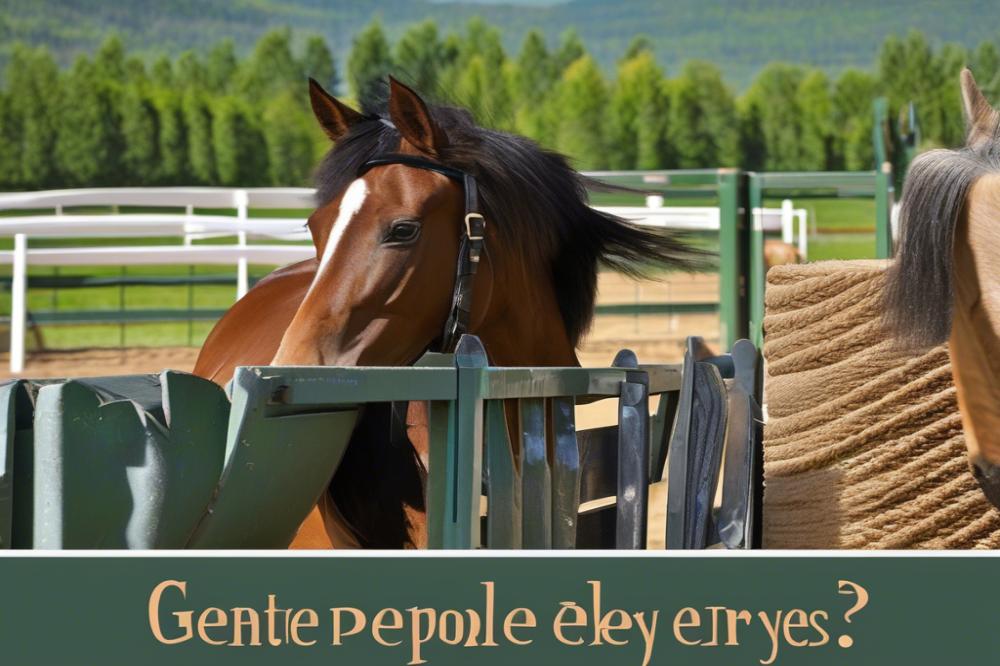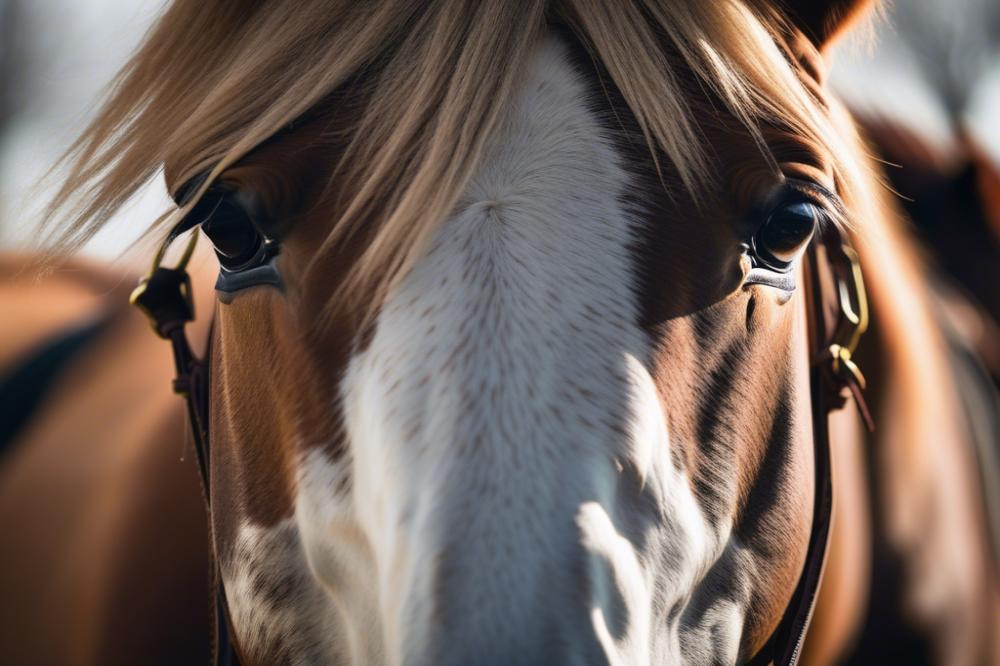Understanding the Role of Horses in Our Lives
Horses have played a significant role in human culture for thousands of years. From ancient warriors mounted on steeds to today’s beloved pets trotting through show rings, these magnificent animals hold a special place in our hearts. In many ways, they symbolize freedom, strength, and companionship. Whether it’s the majestic sight of thoroughbreds at the big horse races in USA or a child’s first pony ride, these creatures weave themselves into the fabric of our daily lives.
The Vital Importance of Eye Health in Horses

When it comes to horse care, eye health and vision are often overlooked. Just as our eyesight is crucial for safely navigating the world, horses rely heavily on their vision too. They have large eyes positioned on the sides of their heads, giving them a broad field of view. This unique adaptation helps them detect predators, ensuring their safety. A horse’s eyesight can reveal a lot about its overall health and behavior. Poor vision can lead to confusion, anxiety, and even danger in their daily activities.
Covering Horses’ Eyes: What Is It All About?

Have you ever seen a horse with its eyes covered? This practice might seem strange at first glance, but it serves a practical purpose in the realm of horse training and safety. Sometimes, horses can become easily startled by sudden movements or bright lights. When their eyes are shielded, it can help calm their nerves and encourage better behavior. Just like a child might wear sunglasses on a bright day, covering a horse’s eyes can protect them from the sun and create a more relaxed environment.
Keeping Our Equine Friends Happy and Healthy
In the world of horse health, keeping our equine companions comfortable is essential. Horses are sensitive creatures, and their vision can be impacted by various factors, such as dust, sun glare, and even bright lights. Covering their eyes in specific circumstances helps to minimize stress. In fact, many horse owners have noticed a positive impact on their equine friend’s behavior during training sessions after using this technique. Imagine the relief of a horse whose nerves settle when faced with a bustling environment! It’s like giving them a cozy blanket on a chilly night.
A Unique Approach to Horse Behavior
Understanding horses requires a blend of empathy and knowledge about their needs. Their behavior tells us a lot about their state of mind, just as a smile reveals a person’s happiness. So, when a horse appears jittery or uneasy, looking into the reasons behind it can be beneficial. Sometimes, covering their eyes can provide safety and comfort—like wrapping up a present before the big reveal. In the end, every effort made in horse care adds to their well-being and enhances the bond between horse and owner, underscoring the timeless friendship humans share with these magnificent animals.
Understanding Horses’ Vision

Let’s talk about how horses see the world. Horse eyes are quite fascinating. The anatomy of a horse’s eye is designed for its needs. They have big round eyes located on the sides of their heads. This placement gives them a wide field of vision. They can see almost 360 degrees around them. However, they do have blind spots right in front of their noses and directly behind them.
Compared to humans, a horse’s vision has some interesting differences. People can see straight ahead with great detail. Horses, meanwhile, notice movement better than we do. They can also see in dim light quite well. This helps them stay alert to predators while grazing at dawn or dusk. Colors appear different, too. Horses are thought to be colorblind to red and green hues. They mainly see blues and yellows, which can confuse them at times.
When it comes to covering horses’ eyes, it can change how they perceive their surroundings. Horses communicate with each other through body language, which involves seeing other horses’ movements clearly. If their eyes are covered with equine equipment like blinkers or hoods, they might feel uneasy. It can limit their view and make them cautious or nervous. That’s why good horse care includes understanding these basic needs of their vision.
A horse not being able to see well can affect its behavior. Anxious horses may spook more easily. Safety is a priority when interacting with them. When training, it is vital to remember that they may not respond well if they can’t see what’s coming. By knowing how horses see, owners can adjust their approach to better suit the animal’s perspective.
Reasons for Covering Horses’ Eyes
Many horse owners choose to shield their animals’ eyes for various reasons. Bright light can be bothersome, especially on sunny days. Horses have sensitive eyes and can be easily dazzled by sunlight. Using equine equipment, like masks or shields, creates a comfortable environment for these majestic animals.
Less distraction can lead to decreased anxiety. Horses are curious creatures but can also get nervous. When there are too many things happening around, they might get jumpy. Covering their eyes can help calm them down. Simply put, it acts like a pair of sunglasses in a crowded room, allowing them to focus on what matters.
Insects and environmental irritants are another concern. Flies can be relentless, buzzing around and landing on their faces. A good eye cover helps protect against those pesky critters, ensuring the horse stays comfortable. Imagine trying to enjoy a nice picnic with bugs swarming everywhere – not so fun, right?
Training and handling benefit from eye coverings too. When introducing new experiences, sometimes horses need a little help. Being able to limit their vision can help them feel safer and more secure. Trainers often find it easier to work with horses that don’t feel overwhelmed. After all, it’s much simpler to guide a horse when it’s not distracted by everything outside its field of view.
Overall, eye coverings in horse care serve multiple purposes. They promote horse health, reduce stress, and improve overall safety. With all these benefits, why wouldn’t a horse owner consider this simple yet effective solution?
Types of Eye Covers
When it comes to horse care, people use different types of eye covers for various reasons. Some folks might not even realize how many options exist. Each form of eye cover serves a special purpose. Understanding these options can help improve horse health and safety.
Fly Masks
Fly masks are one popular type of equine equipment. Made from lightweight mesh fabric, they help keep pesky insects away from a horse’s eyes and face. Horses can wear them during the day, especially in warm weather when bugs swarm. These masks often come with soft padding around the edges to avoid irritation. Plus, some styles even have ears, providing more protection from flies buzzing around their sensitive areas.
Blinds
Blinds are another tool used in horse training. These cover a horse’s eyes on the sides and reduce distractions from the environment. When a horse can’t see what’s happening around them, they often feel calmer. This makes it easier for trainers to work with them. They help prevent spooky behavior when unexpected noises or movements occur. Many trainers swear by these for keeping their horses focused.
Hoods
Hoods serve multiple purposes. These garments can cover a horse’s entire head, including their eyes. This is particularly useful when traveling or during stressful situations. Like masks, hoods usually have padding and are made from breathable materials. Some hoods even have extra features like sun protection, which becomes quite handy in bright conditions. Those thoughtful designs make a big difference in comfort for the horse.
Materials and Designs
Different materials are used in these eye covers to balance comfort and effectiveness. Mesh is common for fly masks since it offers both breathability and visibility. For hoods, softer fabrics can trap warmth and add an extra layer against the elements. Some designs include reflective strips for safety, especially in low-light conditions. Thoughtful designs really do help to keep horses safe and comfortable.
Finding the right eye cover can be similar to choosing the right hat for a sunny day. You want something that fits well and doesn’t restrict movement. Paying close attention to fit is key. A well-fitting cover can improve horse behavior and overall wellbeing. It’s all about making life a bit easier for these majestic creatures.
Benefits of Covering Horses’ Eyes
Covering a horse’s eyes can bring about several advantages for both the animal and its handler. Enhancing horse comfort is one of the most noticeable benefits. Horses are surprisingly sensitive creatures. A sudden movement or a loud noise can cause them to jump or bolt. By limiting their field of vision, you can help them feel more secure and at ease.
When it comes to anxious horses, cover-ups can work wonders. Imagine being in a crowded room with people buzzing all around you. It can feel overwhelming, right? Similarly, horses can feel stressed due to their surroundings. Shielding their eyesight allows them to focus more on relaxing rather than worrying about what’s happening around them. It’s like giving them a cozy blanket of calm. Trainers often find that horses who may have been skittish before become more relaxed during training sessions.
Alongside comfort and relaxation, safety plays a huge role in why covering their eyes is beneficial. Accidents can occur even at the smallest bump in the road. Eye injuries can lead to painful situations and affect overall horse health. Protecting their eyes from debris, bright lights, and other hazards can help prevent these injuries. Just like we wear sunglasses to shield our eyes from the sun, our equine friends can benefit from the same type of protection.
Using certain types of equine equipment, such as blinders or hoods, is a common practice in horse care. Not only do these tools serve as a shield, but they also contribute to improved horse behavior. Seeing less helps reduce distractions, making it easier for trainers to communicate and bond with their horses. It’s like teaching a child in a quiet room versus a loud playground. The quiet room just makes learning smoother.
Overall, covering horses’ eyes serves notable purposes. From supporting their emotional well-being to enhancing safety, these practices can significantly affect how horses behave during training or riding. Who knew a simple piece of equipment could be a game changer for horse training and health?
Considerations and Precautions
When choosing equine equipment for covering horses’ eyes, sizing and fit are crucial. A cover that’s too loose could slip off at the wrong moment. A snug, yet comfortable fit keeps the cover in place without restricting movement. Think of it like buying a hat; no one likes a hat that’s either too tight or too big! Proper fit is key to ensuring horse safety.
Potential risks arise with improper use of these covers. For instance, a poorly fitting cover can cause irritation or even injury to sensitive areas around the eye. Horses are sensitive creatures, and they can react unpredictably if they feel uncomfortable. Watching for signs of distress is vital. If a horse seems agitated, the cover might not be suitable for them.
Sometimes, it’s best to avoid covering the eyes altogether. If a horse is in an unfamiliar setting, or during moments of training, visibility can be really important. A blindfold may prevent a horse from seeing danger coming their way. In these cases, focusing on horse behavior and their natural instincts becomes critical. You don’t want to hinder their ability to react quickly and safely.
Always think about the specific needs of your horse. Each one is a bit different and may react uniquely to certain types of covers. Paying close attention to their comfort can make a world of difference in horse care. It’s not just about the equipment; it’s about the bond you share and how you maintain that trust.
Some situations call for caution. For example, if it’s windy or you’re near other energetic animals, it may be best to let those big, beautiful eyes stay uncovered. After all, horses are not only strong animals, but they also rely on their sights to understand their surroundings. Keeping their vision intact can lead to a safer, calmer experience for both horse and handler.
Cultural and Historical Perspectives
Historical Uses of Eye Covers in Equestrian Practices
In ancient times, the covering of a horse’s eyes often served practical purposes. Horses have been crucial for transportation and labor throughout history. Back then, trainers would sometimes use blinders or hoods to focus a horse’s attention. This was particularly important when driving a cart or plowing fields. With fewer distractions, many horses could better understand commands. This practice still influences how some equine equipment is designed today.
Cultural Beliefs Surrounding the Covering of Horses’ Eyes
Across different cultures, beliefs and customs greatly impacted how horses were treated. Some societies thought that covering a horse’s eyes could ward off evil spirits. Others believed it calmed the animal during stressful situations. A horse wearing eye coverings might also have appeared more dignified to onlookers. In stories and folklore, these practices often represented strength and majesty. This rich tapestry of cultural meanings enriches our understanding of horse care and training.
Evolution of Eye Coverings in Modern Horse Care
Today, the approach to covering eyes has evolved significantly. Modern horse health care emphasizes comfort and safety. Eye covers now range from shades to more practical blinders. These innovations help horses adjust to their surroundings in different environments. Many trainers use them to aid in horse behavior management. Improved designs consider factors like ventilation and visibility. Riders can select eye coverings based on the needs of their horses. As horse safety continues to remain a priority, many owners opt for well-designed alternatives that respect the animal’s well-being.
Wrapping Up Our Thoughts on Covering Horses’ Eyes
In our exploration of why people sometimes cover horses’ eyes, we’ve brushed upon some important reasons. Whether it’s to protect them from harsh elements, unexpected distractions, or even the stress of transportation, it’s clear that the practice can have significant benefits. Horses, being sensitive creatures, can react differently to visual stimuli than we might expect, so protecting their sight in certain situations is crucial for their comfort and well-being.
Balancing the need for protection with a horse’s natural behavior can be a tricky tightrope walk. On one hand, we want to shield these majestic animals from potential dangers. On the other, allowing them the freedom to express themselves and engage with their environment is essential. It’s similar to a parent putting training wheels on a bike; it helps with safety but may hinder the adventurous spirit. So, when deciding to cover those beautiful eyes, always keep the horse’s personality in mind. Some may thrive with a little extra help, while others might start to feel a bit claustrophobic.
Horse owners carry the responsibility of considering their pet’s specific needs above all else. Just as we wouldn’t want to walk around blindfolded, your horse deserves a chance to see the world—albeit with some careful precautions. Think about those moments when you’ve seen a horse’s ears perk up or lay back; understanding horse ear position meanings could give insightful hints about their comfort and willingness. As a bonus, if you’ve ever been curious, do spurs hurt horses? Knowing how to ride responsibly is another critical part of caring for your horse.
In closing, always remember that every horse is unique. It’s not just about their vision; it’s about their whole experience as a companion. When you’re faced with the question of whether to cover your horse’s eyes, take a moment to evaluate the situation. Horses depend on you to recognize their needs and guide them through life with care and respect. Be the owner who fosters a joyful, secure environment for their four-legged friends—and watch them thrive!



